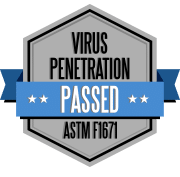Procurement and purchasing managers have it rough. Tasked with finding ways to save money without compromising on quality, safety, or patient care, your creative problem-solving skills are unmatched. According to a survey conducted by Deloitte, 79% of CPOs (Chief Procurement Officers) indicated that procurement saving is their top priority. (procuredesk.com)
There are many out-of-the-box procurement strategies and cost-saving ideas out there, but we’ve narrowed the list down to the top five tips from our experience as both healthcare providers (thanks to our founder’s experience as a urologist) and healthcare suppliers.
First, let’s take a look at the challenges your procurement department is facing, and then we’ll dive into some cost-saving opportunities.
The Challenges of Healthcare Procurement Management
Procurement managers in the healthcare industry face several common challenges that can significantly impact healthcare organizations and their bottom lines. These challenges include overspending, costly logistics, and inefficient inventory management.
Overspending is one of the main challenges in healthcare procurement management. Hospitals often struggle to control and optimize their purchasing process and spending on medical supplies, equipment, and other essential items. This overspending can lead to financial strain on healthcare organizations, limiting their ability to invest in other areas like staff training or facility upgrades.
Another issue faced by hospitals when it comes to procurement management is costly logistics. The logistics involved in sourcing, transporting, and storing healthcare supplies can be expensive and complex. This can result in higher costs and delays in delivering necessary items to healthcare facilities, potentially impacting patient care.
Inefficient inventory management strategies are also a significant challenge in healthcare procurement. Hospitals need to ensure that they have adequate stock of essential items while avoiding excess inventory. Poor inventory management can lead to increased costs, as unnecessary items are purchased and stored, while essential items may be out of stock when needed.
Start tackling these common problems in your hospital or healthcare clinic with the innovative cost-saving & efficiency improvements below.
5 Ways to Save Costs & Increase Efficiency in Your Procurement Process
Finding ways to save costs and improve efficiency is crucial in any business. This is especially true in the procurement process, where each decision can significantly impact the bottom line. Your procurement or purchasing department can help your healthcare business tackle overspending, costly logistics, and inefficient inventory management in a few ways.
By implementing these five cost savings and efficiency improvements in the procurement process, businesses can not only achieve tangible cost reductions but also enhance overall operational effectiveness.
Cost Avoidance
Cost avoidance is a crucial concept in healthcare purchasing and procurement. In essence, cost avoidance is anything (a process, purchase, or strategy) that your purchasing department does to prevent unnecessary expenses. Here are some things to incorporate into your procurement department’s cost-avoidance strategy to avoid unnecessary expenses:
- Contract review & management: Regularly review contracts with suppliers and negotiate better deals to ensure favorable pricing and terms.
- Utilize data analytics: Analyze purchasing data to identify trends, potential cost savings, and areas for improvement. This enables informed decision-making and the ability to negotiate better prices.
- Streamline inventory management: Avoid overstocking or understocking medical supplies by using a Just-in-Time or JIT inventory management system. This helps reduce waste and ensures that necessary items are always available when needed, without the additional expense of unnecessary overstock.
- Be sure you choose your suppliers carefully and stay within the North American supply chain wherever possible in order to avoid shortages connected to world events like the COVID-19 pandemic.
- Collaborate with other healthcare organizations: Engaging in group purchasing organizations or collaborative partnerships can provide economies of scale and leverage purchasing power to secure better prices.
- Engage in value analysis: Evaluate the value and quality of products and services to ensure that they align with the organization’s needs. For example, your healthcare facility may be spending twice as much as necessary when cheap PPE fails to protect your staff. Staff will “double up” on the cheap PPE instead of consuming one unit per procedure to avoid the bloodborne and fluid-borne illnesses that budget PPE leaves them open to.
By implementing these cost-avoidance strategies, healthcare organizations can reduce expenses while maintaining a standard of care and safety for staff and patients.
Cost Savings
Your procurement team is always on the lookout for a deal. Cost reductions are always a priority. Specifically, the cost of acquiring PPE can often place a burden on healthcare budgets. To navigate this challenge, it is important to identify opportunities to save on healthcare PPE costs without sacrificing quality. Here are some strategies to achieve cost savings on these essential supplies:
- Evaluate your current suppliers: Research and compare different suppliers to find the best pricing without compromising on quality standards. This includes assessing their pricing flexibility, reliability, and the quality of their products.
- Buy what makes sense: Purchasing PPE in bulk may allow you to take advantage of supplier volume discounts. Consolidating your orders can also help you negotiate better prices and reduce shipping costs. On the other hand, you want to be able to buy as much as you actually need, so look for suppliers who don’t have minimum order sizes that don’t work for you.
- Explore alternative and premium brands: Maintaining quality standards is essential. Explore the possibility that your facility may be able to use fewer units of better quality PPE from reputable brands you may not be stocking today. These brands may offer products at competitive prices without compromising on safety and performance.
- Improve inventory management: Efficient inventory management can help reduce unnecessary expenses. Regularly review and monitor PPE usage to avoid overstocking or understocking, mitigating the risk of waste or shortages.
- Optimize PPE usage: Educate healthcare professionals on proper PPE usage and disposal to ensure efficient resource use, and be sure to stock PPE that works as it should. This can help encourage the correct use of PPE and minimize unnecessary unit waste.
By implementing these strategies, healthcare facilities can identify opportunities to save costs on PPE procurement while upholding the necessary quality standards. Making informed decisions and finding a balance between cost savings and quality assurance is crucial for effective healthcare budget management.
Cash Flow Savings
By managing your cash flow effectively, you can ensure that you have enough cash on hand to cover your expenses and invest in growth opportunities.
When it comes to purchasing personal protective equipment (PPE), ordering from a North American manufacturer can provide cash flow flexibility. By sourcing PPE from manufacturers within North America, you can enjoy shorter shipping times compared to overseas suppliers. This means you can receive your supplies sooner, allowing you to use the “just in time” inventory method. This helps you control the timing of your expenses, protecting your cash flow.
The “just in time” inventory method ensures that you order and receive supplies as needed, reducing the need for excessive inventory and storage costs. Ordering from a North American manufacturer enables you to restock your PPE inventory quickly and efficiently without tying up excessive cash in inventory that may not be immediately necessary.
Plus, choosing a North American manufacturer also means a secure supply chain. You can have confidence in the quality and availability of your PPE, reducing the risk of supply shortages and business interruptions. A reliable and secure supply chain ensures smoother operations and keeps your cash flowing steadily.
Healthcare Supply Chain Choices
Speaking of the supply chain, ordering your personal protective equipment (PPE) from a North American supplier and manufacturer is the smartest move for hospital and healthcare procurement departments.
Results from one research study revealed that supply chain costs account for up to 40% of the healthcare costs in some hospitals. (tradogram.com) By sourcing PPE from more local suppliers, hospitals can avoid the complexities and uncertainties of international supply chains. This means fewer delays, fewer transportation costs, and fewer chances for stockouts. Local suppliers provide a reliable and consistent source of PPE, ensuring that hospitals can meet their demand without interruptions.
For example, Sloan Medical maintains a fully North American supply chain, from our headquarters to our manufacturing facilities and right up to our shipping partners. During the COVID-19 pandemic, we kept our customers supplied with essential PPE throughout the initial months of the crisis when global manufacturers were shut down or unable to ship supplies overseas.
Last but certainly not least, North American manufacturers have to adhere to the strictest quality and safety standards. By purchasing from them, hospitals can be assured of the highest quality PPE that meets the necessary regulations and certifications. This reduces the risk of faulty or inadequate protective equipment, which can be detrimental to the safety of healthcare providers and patients.
Evaluate Order & Supply Quality
When your supplies arrive, you should be able to answer two questions: did you get what you ordered? And, is the quality what you expected?
When it comes to ordering PPE, investing in premium PPE is a better choice than opting for cheaper alternatives. For example, premium PPE with a one-size-fits-all design is easier to order and stock, and you pick up some cost savings by not having to order multiple sizes of each gown, shoe cover, or patient transfer sheet.
Always ensure that your PPE is crafted using high-quality materials that provide superior protection and durability. All fluid barrier PPE should be tested against and have passed the ASTM-1671 standard. This rigorous testing ensures its reliability and effectiveness in shielding your staff and patients against potential risks and hazards.
Although premium PPE might have a higher initial cost, it offers long-term cost savings. Its durability reduces the need for frequent replacements, saving money in the long run. Additionally, the effectiveness and reliability of premium PPE minimize the risk of accidents or injuries, which can result in costly legal and medical expenses.
Remember, investing in premium PPE not only prioritizes the safety and well-being of individuals but also demonstrates a commitment to maintaining a high standard of protection in various environments. It is a worthwhile investment that ensures the highest level of protection for all.
Value-based Procurement (VBP)
Cost reductions aren’t everything. Value-based procurement (VBP) is a concept gaining momentum in the healthcare industry. As the name suggests, VBP focuses on procuring goods and services based on the value they provide rather than just the cost. This approach is becoming increasingly important as healthcare organizations strive to improve patient outcomes and optimize resource use.
Implementing VBP involves carefully selecting goods and services based on their ability to improve patient health, protect healthcare workers, enhance patient experience, and promote cost-effective care. This shift from a cost-based model to one that places a higher value on outcomes has been shown to lead to better patient outcomes, reduced healthcare costs, and improved resource allocation.
International studies have highlighted the success of VBP in various healthcare settings. For example, a study conducted in the Netherlands found that VBP improved the quality of care and increased patient satisfaction. Similarly, a study in Sweden demonstrated that implementing VBP resulted in a more efficient allocation of resources and reduced healthcare expenditures. (NIH)
The key principles of VBP include aligning incentives with outcomes, promoting transparency, fostering collaboration between stakeholders, and ensuring continuous evaluation and improvement. By selecting appropriate measures and metrics, healthcare organizations can track progress and make informed decisions regarding procurement.
The benefits of VBP in practice are vast. It not only encourages healthcare providers to deliver high-quality care, but it also incentivizes manufacturers and suppliers to develop innovative and effective solutions. VBP promotes a more patient-centered approach to healthcare by ensuring that resources are allocated based on the value they bring to the patient.
Get a Supplier Who’s in Your Corner
The challenges in your procurement and purchasing department aren’t going away any time soon. Your healthcare facility will always be looking to strike a finer balance between cost, value, and care for patients and providers. Choosing the right supplier for your surgical PPE can be a massive undertaking. Unlike great surgical gowns, there is no one-size-fits-all solution for every healthcare facility! If you’re exploring your options, get a free sample of Sloan Medical’s PPE. We’re always here to help you fine-tune your inventory, protect your cash flow, and keep your staff and patients safe & dry.





